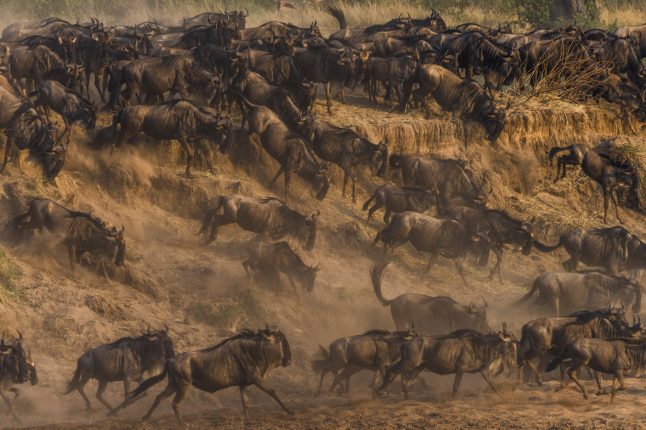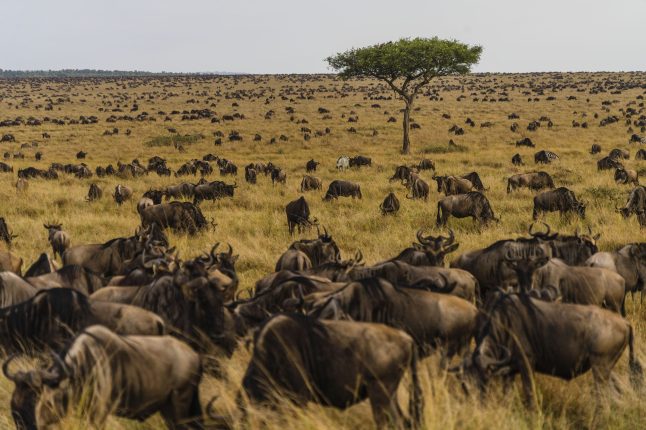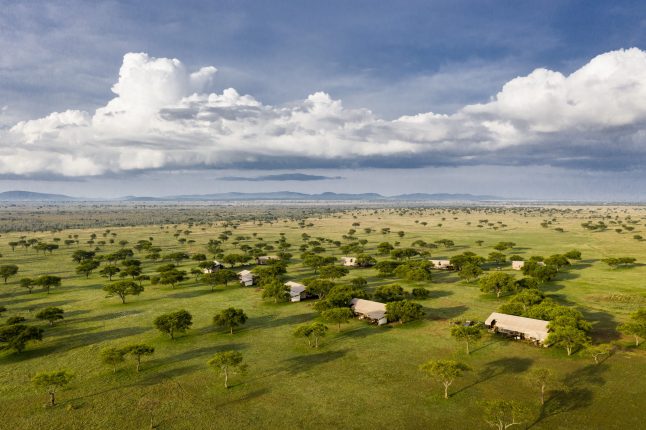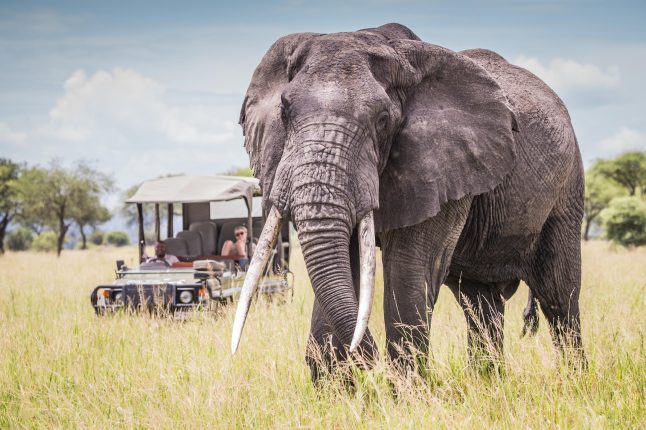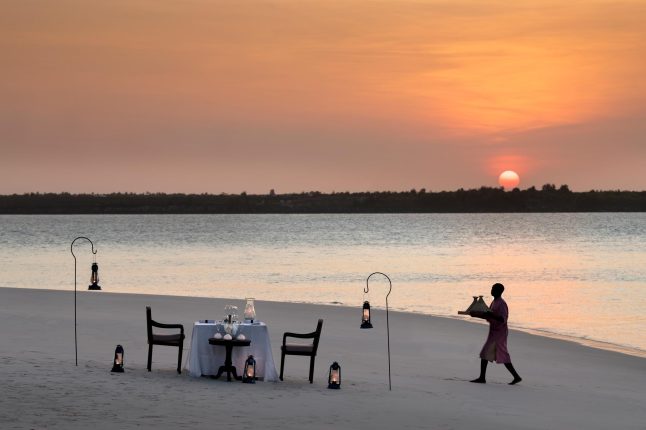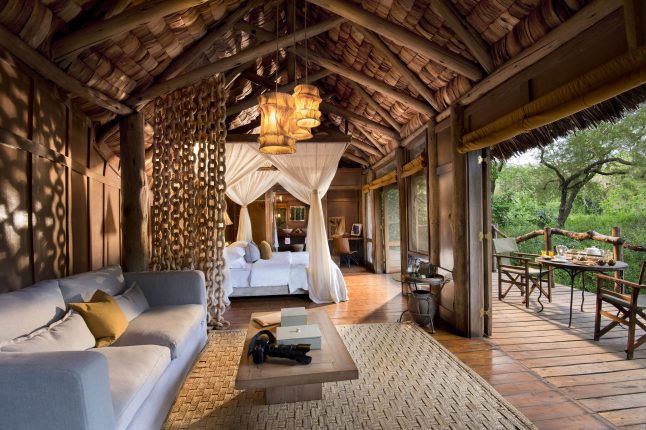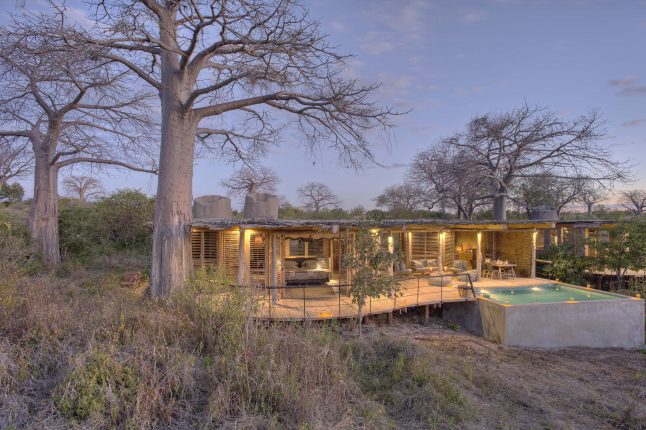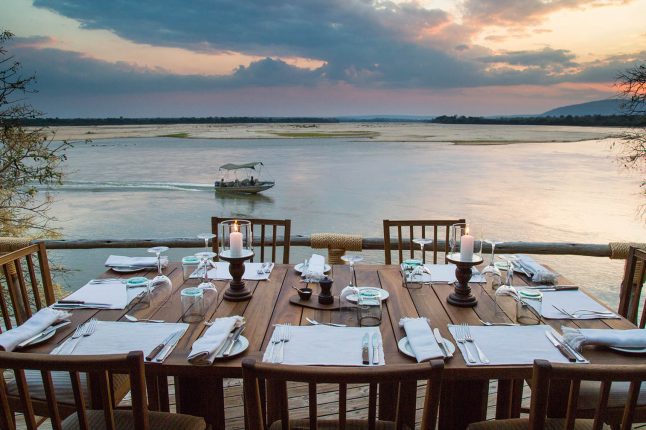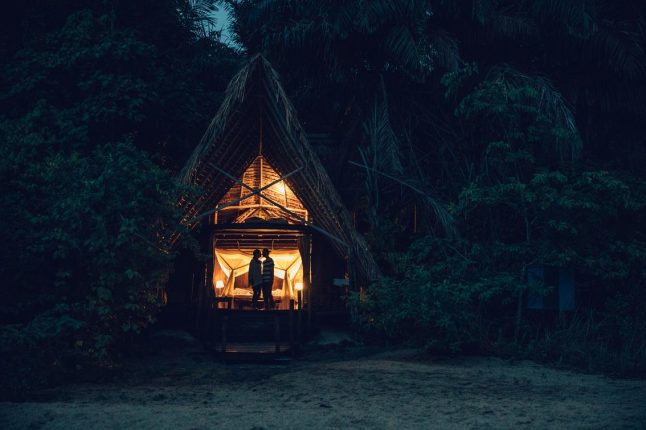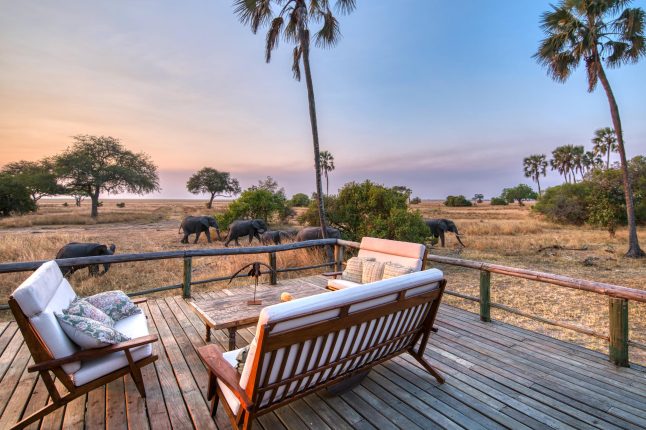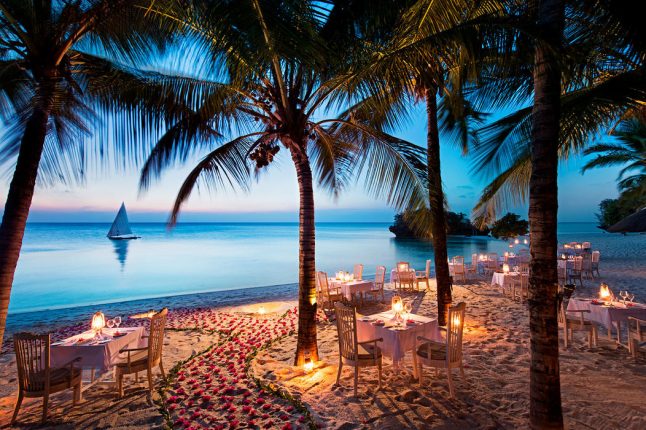Luxury Tanzania Safari Tours
Tailor-made safaris through the Serengeti, Ngorongoro Crater, and beyond - designed by experts who care about the whole journey.
Why Choose a Luxury Safari in Tanzania?
From the vast plains of the Serengeti to the rim of the Ngorongoro Crater and the turquoise waters of Zanzibar, Tanzania is one of Africa’s most iconic safari destinations. At Ubuntu Travel, we design tailor-made journeys that combine thrilling wildlife encounters with exceptional comfort – all guided by experts who care about the whole experience. Whether you’re here for the Great Migration or a romantic island retreat, this is where your luxury safari begins.
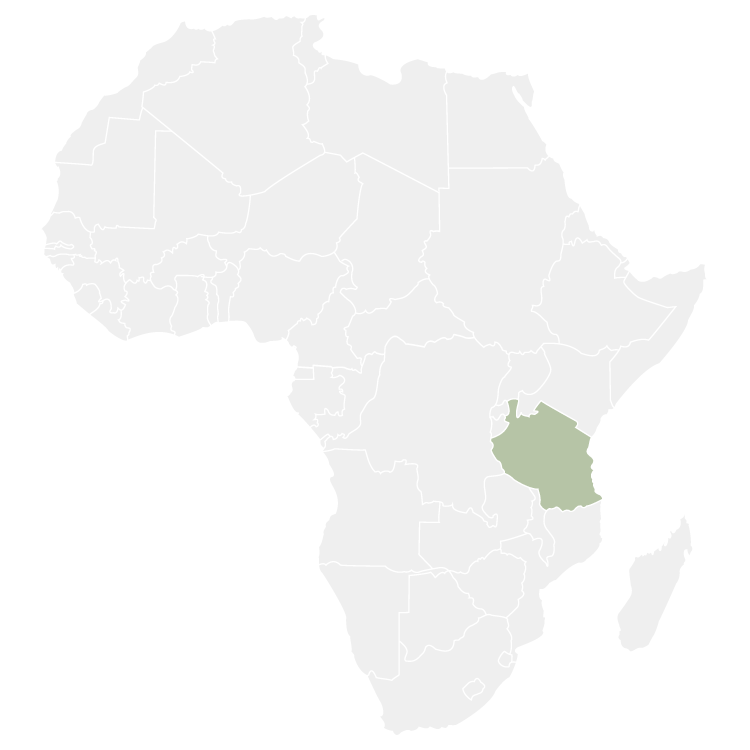
Tanzania’s Most Iconic Destinations
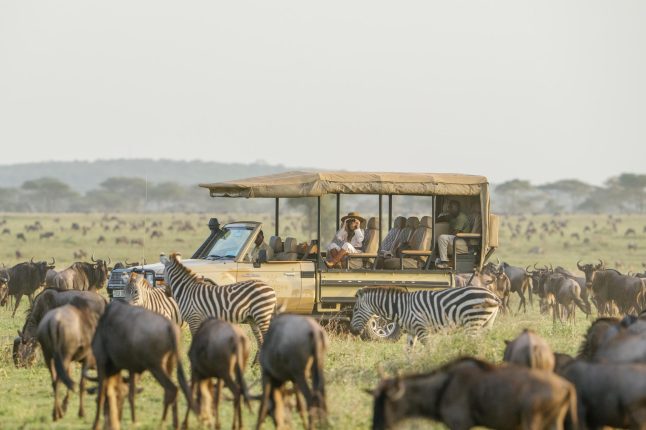
Serengeti National Park
Follow the Great Migration across vast plains with lions, leopards, and river crossings – then unwind at exclusive luxury safari lodges.
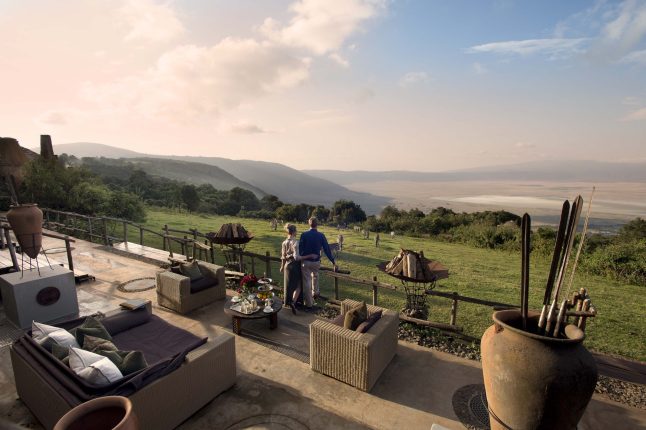
Ngorongoro Crater
Explore a dramatic volcanic caldera home to black rhino, elephants, and big cats – plus luxury lodges perched on the rim.

Zanzibar
Relax on white-sand beaches after safari – snorkel coral reefs, tour spice plantations, and explore Stone Town’s Swahili heritage.
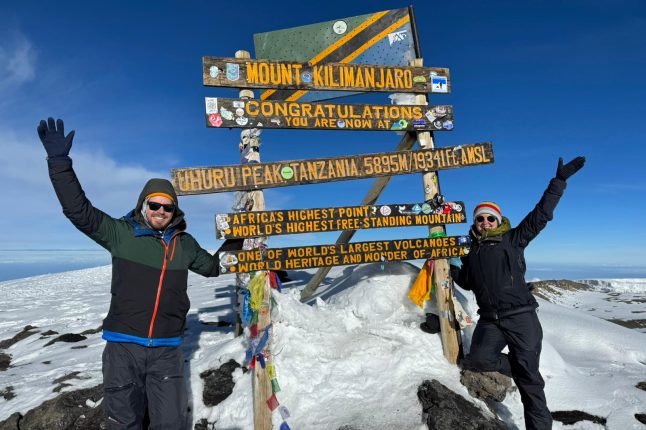
Mount Kilimanjaro
Africa’s highest peak rises above the plains – climb to the summit or take in its snow-capped beauty on a Northern Circuit safari.
Plan Your Tanzania Safari
Let’s start designing your private safari experience. Whether you’re after adventure, relaxation, or both – we’ll tailor every detail to how you want to experience Africa.
Tailored Tanzania Safari Itineraries
These are some of our favorite Tanzania safari itineraries – handpicked by Ubuntu Travel co-founders Kyle and Leah to highlight the very best of the country.
Married and torn between beach or safari? Tanzania offers both – Serengeti game drives, Ngorongoro sunsets, and Zanzibar’s turquoise waters on a 14-day honeymoon safari.
Experience the Serengeti’s calving season on this 15-day safari – thousands of wildebeest born daily, with predators close behind. A raw, powerful display of life and survival.
Track the Big Five and Great Migration on this 12-day East Africa safari – camel rides in Lewa, wildebeest crossings in the Mara and Serengeti. End your journey with a relaxing stay in the breathtaking Ngorongoro Crater, Earth’s largest intact volcanic caldera.
The Ubuntu Travel Difference

Personalized Itineraries
Attention to detail from start to finish

Conservation Promise
Travel with a purpose

Experts in Africa
Our team of travel experts know Africa
Ready to Plan your Tanzania Safari?
Reach out today and connect with our expert team – we care about the whole journey, from your very first call to your final farewell on safari. Every itinerary is thoughtfully designed by our co-founders, Kyle and Leah, to reflect the kind of journey we’d take ourselves.
Places to Visit in Tanzania
From iconic national parks to remote mountain ranges and island coastlines, Tanzania offers a rich diversity of landscapes that promise something for every kind of traveler.
Experience the Great Migration in Tanzania’s Serengeti National Park – vast plains, big cats, river crossings, and luxury safari lodges in one of Africa’s most iconic wildlife destinations.
Set in a vast private concession bordering the Serengeti, Singita Grumeti offers ultra-luxury lodges, exceptional wildlife, and exclusive access – far from the crowds.
Often called “Africa’s Garden of Eden,” the Ngorongoro Crater is a 3-million-year-old volcanic caldera teeming with wildlife, including black rhino, and home to luxury lodges on the rim.
Tarangire National Park offers a quieter, off-the-beaten-path safari with seasonal elephant migrations, ancient baobabs, and intimate game drives far from the crowds of Tanzania’s busier northern parks.
Mount Kilimanjaro is Africa’s highest peak and a dormant volcano – offering one of the world’s most iconic trekking experiences, with routes suited to both seasoned climbers and adventurous first-timers.
Zanzibar blends white-sand beaches with Swahili culture – wander historic Stone Town, snorkel coral reefs, and unwind at luxury island retreats after your Northern Tanzania safari adventure.
Lake Manyara National Park offers dramatic scenery, from groundwater forests to the Rift Valley escarpment – famous for tree-climbing lions, flamingos, and rich birdlife in a compact safari setting.
Tanzania’s largest national park, Ruaha is a remote wilderness home to 10% of the world’s lions – vast landscapes, baobab valleys, and predator-rich game drives await adventurous travellers.
Formerly part of the vast Selous Reserve, Nyerere is a UNESCO-listed wilderness – renowned for boat safaris, walking adventures, and rare wildlife sightings in one of Tanzania’s largest protected areas.
Set on Lake Tanganyika’s shores, Mahale blends tropical forests and remote beaches – offering Africa’s most rewarding chimpanzee trekking and one of Tanzania’s most magical off-the-map experiences.
Home to the planet’s largest buffalo herds, Katavi offers raw, crowd-free safari experiences – with hippo-filled waterways, abundant predators, and one of Tanzania’s most untouched wildernesses.
Less-visited than Zanzibar, Pemba Island is a diver’s paradise – offering untouched coral reefs, lush spice farms, and exclusive beach escapes for those seeking barefoot luxury and seclusion.
When is the Best Time to Visit Tanzania?
Tanzania offers incredible safari experiences year-round, but the best time to visit depends on what you want to see – from the Great Migration to green season beauty. To help you decide, we’ve created a simple month-by-month season guide that breaks down what to expect and when.
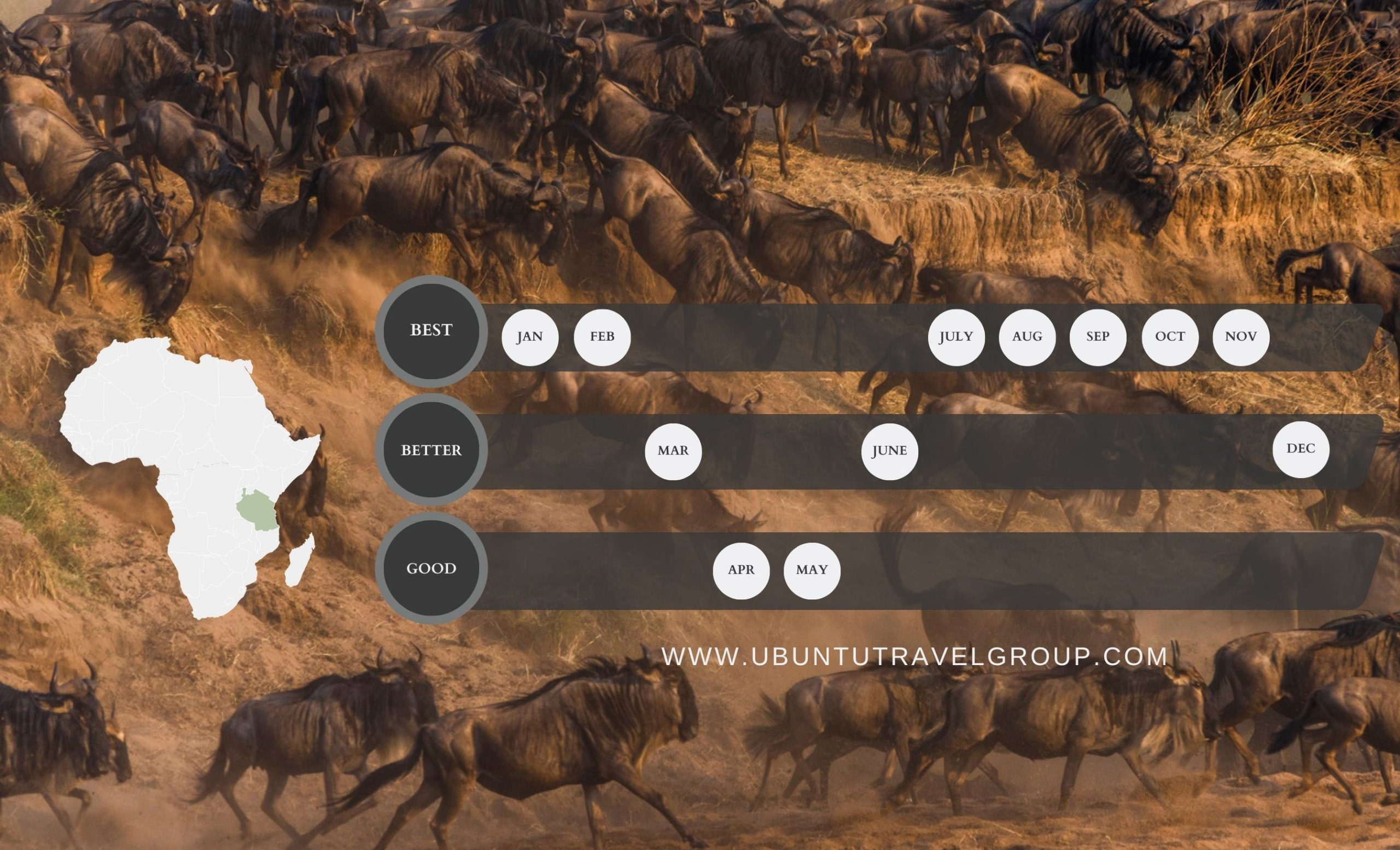
Tanzania is a year-round safari destination, with each season offering something unique. But the question we hear most is: when can I see the Great Migration – and what might it be doing? Here’s a quick breakdown to help you plan:
December – March: Herds gather in the southern Serengeti and Ndutu region for calving season. Expect dramatic predator-prey interactions.
April – May: The migration moves north through the central Serengeti as the long rains begin.
June – July: River crossings begin in the western corridor — a thrilling and iconic safari spectacle.
August – October: Herds are in the northern Serengeti, crossing into Kenya’s Masai Mara and returning south again.
November: The herds begin moving back to the southern plains, completing the cycle.
FAQs About Safaris in Tanzania
Where is Tanzania in Africa?
Tanzania is located in East Africa, just south of the equator. It borders Kenya and Uganda to the north, Rwanda, Burundi, and the Democratic Republic of the Congo to the west, and Zambia, Malawi, and Mozambique to the south.
Its eastern border meets the Indian Ocean – home to the tropical islands of Zanzibar. With iconic landscapes like the Serengeti, Mount Kilimanjaro, and Ngorongoro Crater, Tanzania is one of Africa’s most celebrated safari destinations.
When is the best time to see the Great Migration in Tanzania?
The Great Migration is a year-round event in Tanzania, but the best times to witness key highlights are:
- January to March: Calving season in the southern Serengeti and Ndutu region – thousands of wildebeest give birth, attracting predators.
- May to July: Herds head north through central Serengeti; river crossings begin in the western corridor (Grumeti River).
- August to October: Iconic Mara River crossings in the northern Serengeti near Kogatende – dramatic, unpredictable, and unforgettable.
- November to December: The herds begin moving south again with the short rains.
Each season offers something unique. Speak to us about timing your trip with the movement of the herds.
What are the top wildlife experiences in Tanzania?
Tanzania offers some of Africa’s most immersive wildlife encounters:
- The Great Migration in the Serengeti – witness one of the world’s last great terrestrial movements.
- Big Five sightings in Ngorongoro Crater – dense predator and prey populations in a spectacular volcanic caldera.
- Chimpanzee trekking in Mahale Mountains or Gombe Stream – a deeply moving primate experience on the shores of Lake Tanganyika.
- Walking safaris in remote areas like Ruaha and Katavi – for those craving solitude and connection to wild Africa.
- Hot-air ballooning over the Serengeti at sunrise – serene views of the plains and wildlife below.
What are the top safari destinations in Tanzania
Tanzania is diverse and vast – here are the highlights:
-
Serengeti National Park – Home to the Great Migration and abundant year-round wildlife.
-
Ngorongoro Crater – A UNESCO World Heritage Site offering the chance to see the Big Five in a single day.
-
Tarangire National Park – Known for its elephant herds, giant baobabs, and seasonal wildlife density.
-
Lake Manyara National Park – Famous for tree-climbing lions and flamingo-filled lakeshores.
-
Ruaha and Selous (Nyerere National Park) – Remote southern parks with fewer crowds and exceptional big game.
-
Zanzibar Archipelago – For post-safari relaxation with spice tours, diving, and pristine beaches.
Do I need any vaccinations before traveling to Tanzania?
Yes, some vaccinations are recommended for travel to Tanzania from the United States. These often include:
- Hepatitis A
- Typhoid
- Tetanus
- Routine immunizations (MMR, DPT)
- Yellow Fever (required if arriving from a country with yellow fever risk)
Important Disclaimer: We are not medical professionals. While we’re happy to share general guidance, you should always consult your local Travel Doctor or healthcare provider before traveling to Africa for personalized medical advice.
Is Tanzania a malaria area?
Yes, Tanzania is located in a malaria-endemic region. That said, it is entirely possible to have a safe and healthy safari by taking the proper precautions.
Disclaimer: We are not medical professionals. Please consult your doctor before traveling. The following is general guidance:
Tip 1: Repel the mosquitoes
The malaria-carrying mosquito is most active at dusk and dawn. Always wear repellent and cover up with long-sleeved shirts and trousers during these hours. Remember, mosquitoes can bite through fabric. Fortunately, most lodges offer added protection through screened windows, mosquito nets, and air-conditioning.
Tip 2: Always take anti-malaria tablets
Taking a prophylactic medication is the most effective way to prevent malaria. But not all medications suit everyone. Always speak to your doctor to ensure you take the correct tablets for your itinerary and health profile.
Tip 3: Monitor symptoms and complete your course
If you feel unwell during or after your trip—especially with flu-like symptoms—get tested for malaria as soon as possible. Malaria responds well to early treatment. Also, don’t stop your medication early. Always complete the course prescribed by your doctor.





